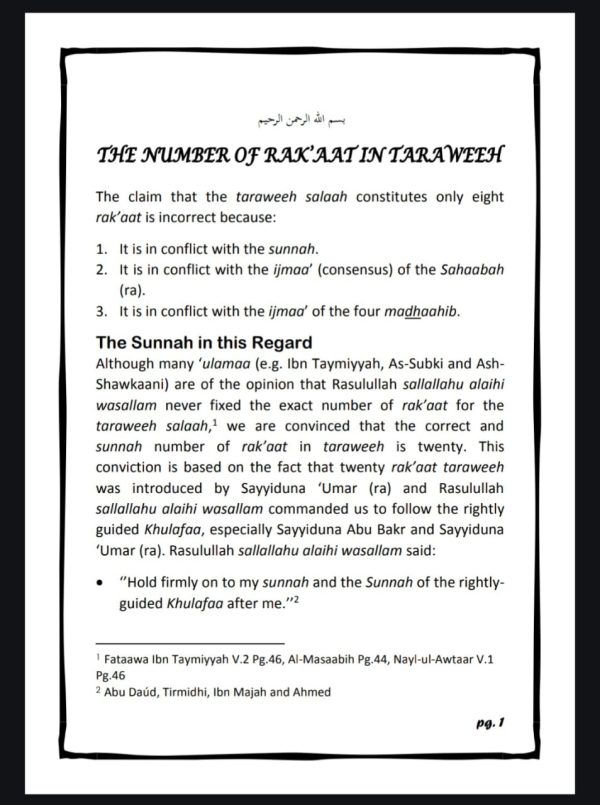TARAAWEEH”, the book primarily addresses the debate surrounding the number of rak’aat (units) in the Taraweeh prayer, which is a special prayer performed during the nights of Ramadan. The author argues against the claim that Taraweeh consists of only eight rak’aat, presenting a detailed defense of the opinion that twenty rak’aat is the correct number based on the Sunnah, the consensus (Ijmaa’) of the Sahabah (companions of the Prophet Muhammad, PBUH), and the major Islamic schools of thought (madhaahib).
The chapter begins by outlining the importance of following the practices of the Rightly Guided Caliphs, particularly Sayyiduna Umar (RA), who introduced the practice of performing twenty rak’aat of Taraweeh. The author emphasizes that this number was unanimously accepted by the companions of the Prophet and that opposing this consensus contradicts the traditions of the Prophet and the early Muslim community.
The book also delves into the opinions of the four major schools of thought (Hanafi, Maliki, Shafi’i, and Hanbali), all of which support the practice of performing twenty rak’aat. It explains that Imam Malik’s school includes a tradition of thirty-six rak’aat, but this was due to the additional prayers performed by the people of Madinah and does not contradict the core practice of twenty rak’aat.
The author addresses a common misconception that confuses Taraweeh with Tahajjud (another night prayer). The book asserts that these are distinct practices, with Taraweeh being specific to Ramadan and performed immediately after the Isha prayer, while Tahajjud is performed later in the night and throughout the year.
Throughout the chapter, the author supports his arguments with references from hadith and scholarly works, reinforcing the view that performing twenty rak’aat is not only the Sunnah but also the established practice of the Muslim community through the ages





Reviews
There are no reviews yet.